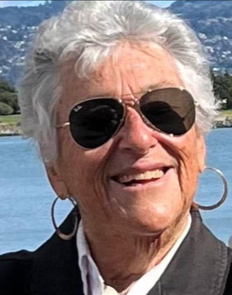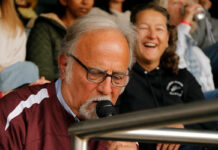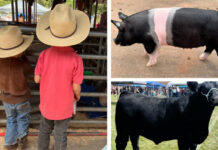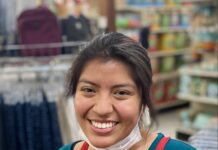I’ll be honest with you. I was looking for a Ukrainian to speak with this week. Ukraine is very much on my mind, and I suspect, concerns many of you out there. The Russian invasion of Ukraine in 2022, is so frighteningly similar to the German invasion of Poland, and all the other countries it rolled into back in the late ’30s.
Well, I couldn’t find a Ukrainian, though I’m certain that there are many in Sonoma County who are deeply connected.
But I did myself in a car with Elaine Leeder for a number of hours, (more on the why of that soon), and though not of Ukrainian stock, her Lithuanian heritage and experience, seemed close enough.
Elaine and I were driving to Wheatland, a small town between Roseville and Yuba City in the Central Valley. We are both members of something called The Story Project of Sonoma County, a group made up of either Holocaust survivors (of which we are down to one), or the children of Holocaust survivors. We go into high schools, to tell our family stories and recount the overt racism and intolerance they experienced, and connect that to fighting racism, fascism and intolerance in our own society.
We were heading to Wheatland, because of an event there that was especially distressing, and we wanted to be part of a response to it. A few (eight) students were at a beer and hate fueled party back in December, and for some reason they felt that painting large Nazi swastikas, and the SS logo of the brutal Nazi police, on their stomachs, together with flashing white power signs, was a good idea. Then one of the kids did us the favor of taking a picture of the painted swastikas, and posting it on social media. Well, it didn’t take long for the picture to make it’s way across the land, and so we were all exposed to their racist antics.
Elaine and I, and another member of our group, were going to Wheatland for two days to speak primarily in history classes, and help them understand what the Nazis really did back in the ’30s and ’40s and how the students might confront bullying, and hate, today. Though the eight students who were in the picture are not currently allowed on campus with the other students, we managed to meet directly with four of them and a few of their mothers, in what was perhaps the most meaningful part of our trip. It was an attempt at restorative justice, which is something Elaine turns out knowing something about.
Elaine, where and when were you born?
Lynn, Massachusetts, on July 7, 1944. I’ll be 78 this summer.
My family, like many of our neighbors, were working class immigrants.
And your family today?
I was married for 16 years, and have one daughter, now a 50-year-old who works at the University of Oregon doing social justice work, like me. She has sweetly said, that she stands on my shoulders. I’m very proud of her.
Tell me about your parents.
My father was a Lithuanian refugee, who got out in January of ’39. His was one of the very last visas to be given out by the US that year. Pitifully few visas were being issued.
Hold on. A war was clearly brewing in Europe, (the Germans kicked it off on Sept. 1, 1939 by invading Poland), and the US was only allowing scant numbers of individuals a year from all of Lithuania to take refuge in our country?!?
Yes. Pitifully few. Actually, the visa my father got was intended for my aunt, Althea, my dad’s older sister, but she stayed back to care for my grandfather who was ill.
Did Althea survive the war?
No. She was marched out to a massive pit in June of ’41, outside of Kupiskis, together with my grandmother, and my 17-year-old uncle. They were led by a Nazi, and a Lithuanian collaborator. Their sad fate is the memory I live with every day.
Two thousand Jews, from there and surrounding shtetls (villages), where killed at that pit, in one day. I visited there myself, to say Kaddish (the Jewish mourners prayer), in 2014.
It’s now a beautiful park. The contrast of the bodies of so many innocent people buried there, with the beauty of the site today, was jarring. Equally disturbing was the signage there, that honored the “brave Lithuanian citizens” buried there. Nowhere does it mention the fact that they were all Jews. Get this — in six months, from June to December of ’41, 175 thousand Jews, out of a total of 200 thousand, were killed.
What became of your father once he got here?
He was a yeshivah (Jewish religious seminary) scholar in Lithuania. That, and a ski trooper in the Lithuanian army. Here, he became a junk dealer. He started with a cart, and eventually bought a scrap yard together with his uncle. By night, he was still a scholar, studying Kabbala (mystical Judaism).
And your mom?
My mother, who was born here in the states, was the daughter of Polish Jewish immigrants who probably lost somewhere in the area of 100 cousins, aunts, uncles, in the holocaust. She didn’t speak English until she went to public school. Yiddish was the household language. I grew up in a traditional orthodox Jewish home.
And how do you define yourself today?
Atheist, anarchist, feminist, and Jewish.
Are you focusing on the massive losses your family experienced in the Holocaust, because we’re on our way to Wheatland where we’ll try to explain the magnitude of the hate in our not so distant past?
Probably. Jews have been commanded to try to heal the world. It’s called Tikun Olam. That’s what we in The Story Project are trying to do.
I’m drawn to working with violent perpetrators because I want to understand how people can commit evil, as they did with my family in Lithuania.
What is it that you do with violent perpetrators?
For 25 years I was a prison college educator. Then I ran self-help groups, and now I do restorative justice/victim offender dialogues. I work with murderers, kidnappers, and rapists, and bring them together with their victims, or the victim’s families. It is the most rewarding, profound, and satisfying work of my life.
You’ve been doing this for a long time. When did it start?
My life seems to have been focused on social justice from the beginning, actually age five.
Now how’s that?
My mother forbade me to walk to school with a Black neighbor in the first grade. So I set it up with this girl, we were only five, maybe six, to meet around the corner, so that we could walk together and be friends, in spite of my mother.
That’s very impressive.
You are now retired from SSU. What did you do there?
I was the Dean of Social Sciences and a professor of sociology. Before that I taught at Ithaca College and before that I was a social worker and psychotherapist.
Tell us about the books that you’ve written.
I’ve actually written six.
One is a biography of the anarchist, Rose Pesotta, a friend of Sacco and Vanzetti, and of Emma Goldman. Another is about working with violence in the family and two about working with prisoners. Then there’s two textbooks about the sociology of families with a global perspective.
Hey, in the world of “publish or perish,” you’re sitting pretty.
So what books are you reading today?
I just finished “Rebel Cinderella” by Adam Hochschild. It’s a biography of Rose Pastor Stokes, a communist/activist in the early 20th century. And Steven Levine’s “One Year to Live.”
And “The Weight of Ink,” about a woman in the 15th century who was a scribe.
In Australia they’d say “no flies on Elaine.” You’re a very engaged woman.
I’ve gotten to 65 different countries, and want to see a few more before I die. It helped that I’ve taught on three voyages of a university ship. It’s called Semester at Sea. Great way to see the world.
And your next big project?
I’m starting a new victim offender case and I’m teaching a course called Jews, Gender, and the Family (just a three week course) at the Osher Marin JCC and New Lehrhaus.
Oh, and I’m relearning Yiddish. That should keep me busy.
Who would you give an extra 20 bucks to today?
Doctor’s Without Borders is my favorite.
And Mount Tam College, (formerly known at the Prison University Project) which is a prison education program at San Quentin.
Elaine, I know I should be more impartial with the subjects of these little columns, but I must say, we’re lucky to have the likes of you around. You are clearly adding to the greater good, and I know I speak for many when I say that, we are grateful.
Though the chances seem increasingly remote, let’s hope for a cessation of the violence in Ukraine, and taking a few giant steps backwards from the global clash that feels closer every day.
Doctor’s Without Borders can be found at:
www.doctorswithoutborders.org
Mount Tam College is at:
www.mttamcollege.org
And should you feel a desire to reach out to Elaine herself, you can reach her at:
www.elaineleeder.com
50.3
F
Healdsburg
April 16, 2025








